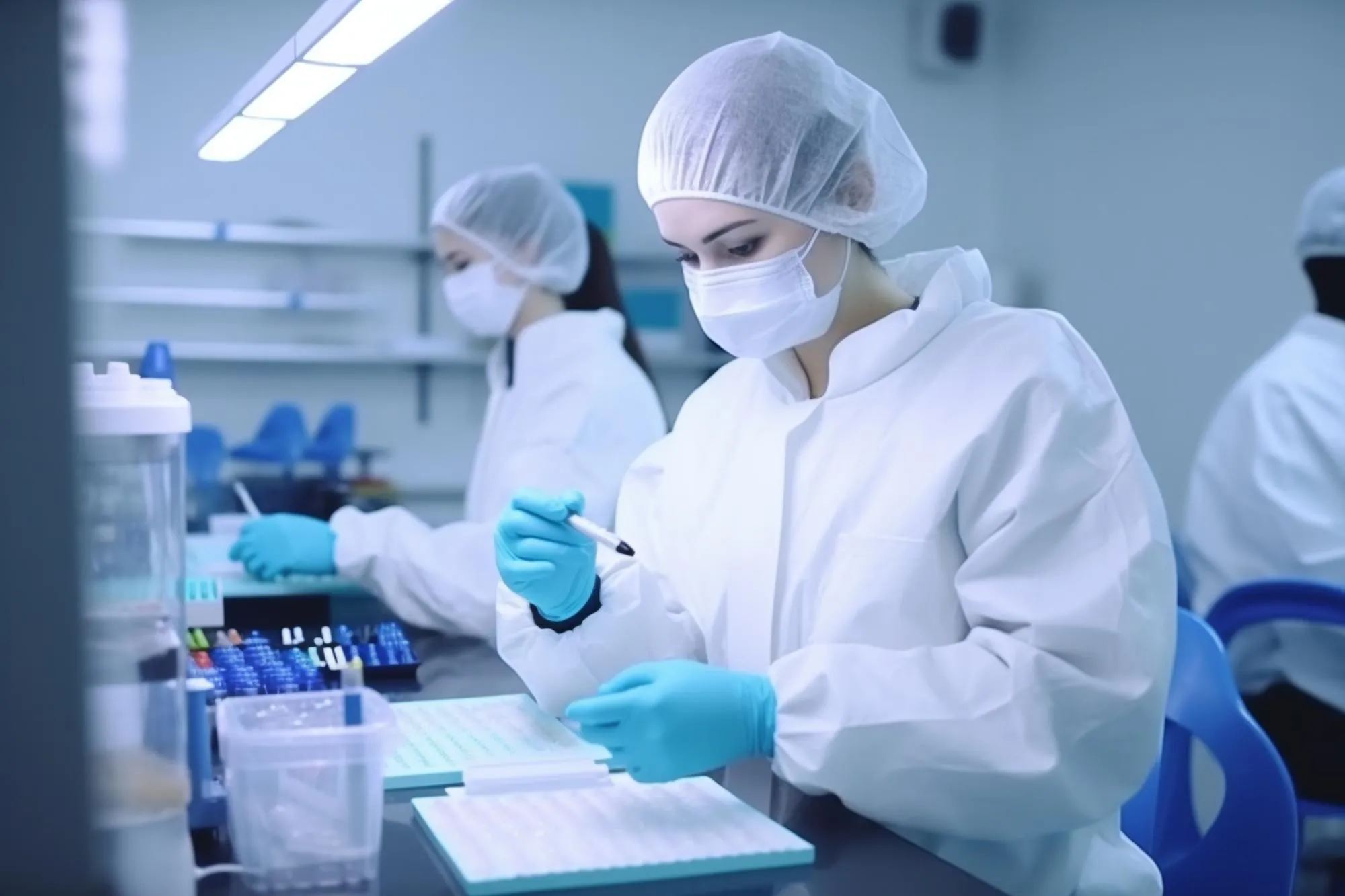Keywords
1. Periapical Abscess
2. Mesenchymal Stem Cells
3. Immunohistochemistry
4. CD105
5. Periapical Cyst
In a groundbreaking study published in the Journal of Endodontics in June 2019, researchers at the Federal University of Goiás in Brazil provided new insights into the pathogenesis of periapical cyst formation, suggesting potential targets for future therapeutic interventions. The study, titled “Mesenchymal Stem Cell Marker Expression in Periapical Abscess,” indicates that periapical abscesses have a greater presence of mesenchymal stem cells (MSCs) compared to other periapical lesions which might influence the course of disease progression and cyst development. This pivotal research has potentially significant implications for the field of endodontics and patient care.
Introduction: The Root of the Problem
A periapical abscess is an acute inflammatory condition caused by bacterial infection from a necrotic tooth pulp, which results in the accumulation of pus at the tip of the tooth root. If left untreated, this condition can cause severe pain, lead to loss of the affected tooth, and may even contribute to systemic infections and complications. Traditionally, periapical abscesses, along with granulomas and cysts, are classified as lesions of endodontic origin and have been extensively studied because of their prevalence and impact on oral health. However, the exact cellular mechanisms by which periapical abscesses form and potentially transition to cysts remain unclear.
Scientists from the Federal University of Goiás, led by Dr. Carlos Estrela, sought to identify whether the presence and expression of MSC markers in periapical lesions could be linked to the formation of abscesses and cysts. This research team, which included experts like Paulo Otávio Carmo Souza, Mateus Gehrke Barbosa, Artur Aburad de Carvalhosa, Aline Carvalho Batista, Décio Dos Santos Pinto Júnior, Fernanda Paula Yamamoto-Silva, and Brunno Santos de Freitas Silva, provided valuable contributions to the study that may revolutionize the understanding and treatment of periapical diseases.
Methodology: Investigating the Source
The research team conducted a study comparing the expression of MSC markers, specifically CD44, CD73, and CD105, in periapical abscess samples (n=10), granulomas (n=10), cysts (n=10), and apical papillae (n=10), utilizing immunohistochemistry as the primary tool. A quantitative scoring system was developed to evaluate immunohistochemical expression, allowing for in-depth analysis and comparison across different types of periapical lesions.
Findings: A Significant Discovery
The study revealed that CD44 and CD73 immunostaining was observed predominantly in the mesenchymal cells located in the outer portion of the abscess and periapical cyst specimens, with CD105 expression particularly found in the mesenchymal and vascular endothelial cells of the lesions. Most notably, however, it was discovered that MSC marker expression was significantly higher in periapical abscesses in comparison to other lesion types. The research team found a statistically significant association between the presence of MSCs and the histopathological diagnosis of an abscess (P < .05), suggesting that an increased MSC presence might play a role in the pathogenesis of periapical abscesses and ultimately in the formation of cysts.
Implications: Expanding the Horizons of Dental Practice
This study’s findings propose that MSCs in periapical regions could influence the course of disease progression from an abscess to a cystic formation. Recognizing the significant presence of MSC markers in periapical abscesses provides new pathways for potential therapeutic strategies, which could include targeted interventions to modulate MSC activity and inhibit cyst development.
The intricate role of MSCs in tissue repair and regeneration has been well-documented in other areas of the human body. Their abilities to differentiate into various cell types mean that they could potentially be manipulated for favorable outcomes in dental pathologies as well. Understanding the specific environmental cues and molecular signals that promote MSCs to contribute to periapical abscess formation and subsequent cyst development could open doors to new treatments, thus reducing the need for more invasive procedures like tooth extraction or surgery, and preserving natural dentition.
Future Directions: A New Chapter in Endodontic Research
Moving forward, this study paves the way for further research into the identification of pathways and signals that promote the recruitment and activation of MSCs within periapical abscesses. Studies could explore the role of inflammatory mediators, the impact of the surrounding extracellular matrix, and the influence of local factors on MSC behavior and differentiation.
Conclusion: A Beacon of Hope for Endodontic Patients
The findings of this research not only expand the scientific community’s understanding of the molecular mechanisms at play in periapical abscesses but also offer a beacon of hope for patients suffering from these painful conditions. By targeting MSCs and their related pathways, clinicians may eventually be able to limit or prevent cyst formation, delivering treatments that are both more effective and less invasive.
This significant contribution to the field of endodontics emphasizes the importance of multidisciplinary research and the need for a more profound comprehension of the biological processes involved in oral pathologies. As science continues to progress, the bridge between bench research and clinical dentistry grows ever shorter, leading to more refined, patient-centered care.
References
1. Estrela, C., Carmo Souza, P.O., Gehrke Barbosa, M., Aburad de Carvalhosa, A., Carvalho Batista, A., Pinto Júnior, D.D.S., … de Freitas Silva, B.S. (2019). Mesenchymal Stem Cell Marker Expression in Periapical Abscess. Journal of Endodontics, 45(6), 716-723. https://doi.org/10.1016/j.joen.2019.03.009
2. Hargreaves, K.M., Cohen, S., & Berman, L.H. (2016). Cohen’s Pathways of the Pulp. St. Louis, MO: Mosby Elsevier.
3. Lin, L.M., Rosenberg, P.A., & Lin, J. (2005). Do all cystic lesions of the jaws require surgery? Oral Surgery, Oral Medicine, Oral Pathology, Oral Radiology, and Endodontology, 100(1), 50-58. https://doi.org/10.1016/j.tripleo.2004.06.072
4. Nair, P.N. (2004). Pathogenesis of apical periodontitis and the causes of endodontic failures. Critical Reviews in Oral Biology & Medicine, 15(6), 348-381. https://doi.org/10.1177/154411130401500604
5. Trubiani, O., Zalzal, S.F., Pizzicannella, J., & Caputi, S. (2019). Dental Pulp Stem Cells: State of the Art and Suggestions for a True Translation of Research into Therapy. Journal of Dentistry, 84, S54-S60. https://doi.org/10.1016/j.jdent.2019.06.004
DOI: 10.1016/j.joen.2019.03.009
